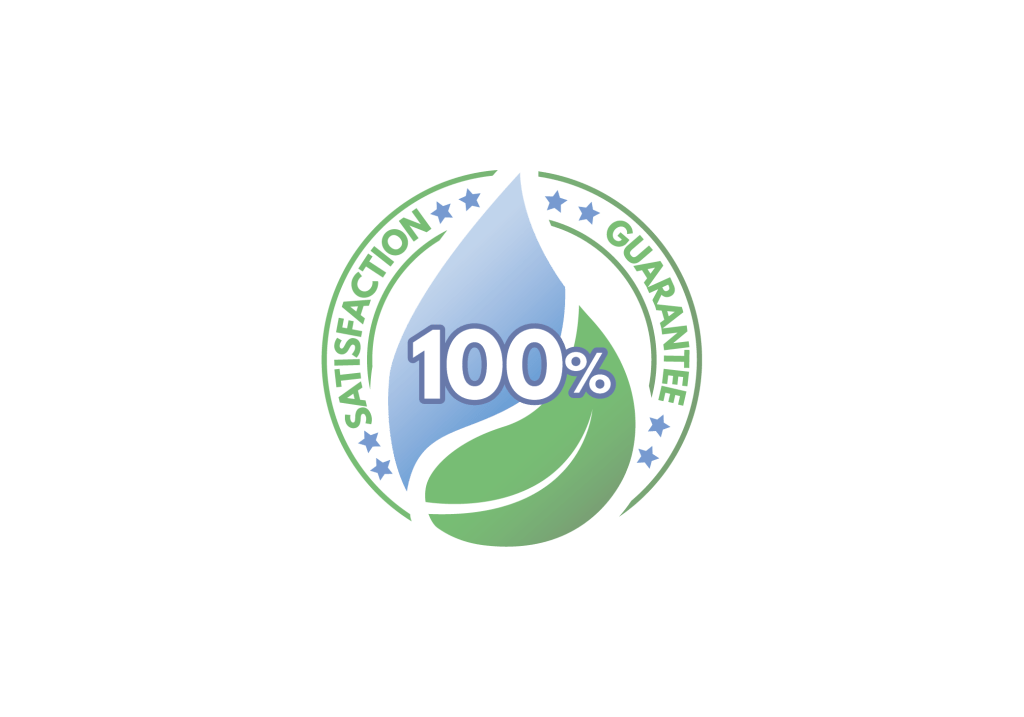Even though your grass may be hidden by a beautiful—yet chilling—blanket of white through the winter months, that doesn’t mean you should take the out-of-sight, out-of-mind approach. It shouldn’t be neglected because it’s dormant until the temperatures warm back up.
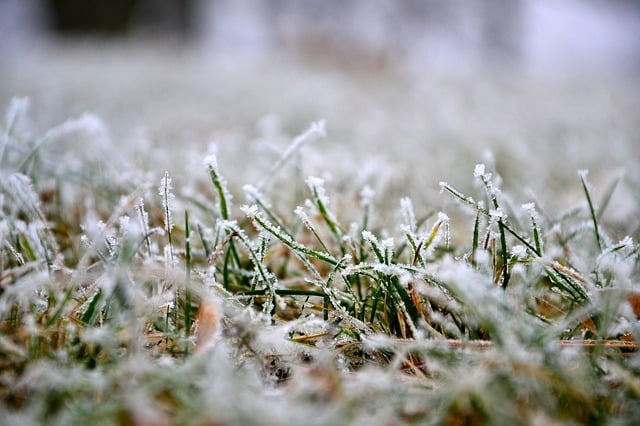
Taking care of your yard with these seven winter lawn care tips will help it green up quickly in spring and put you steps closer to a gorgeous, lush landscape.
1. Apply a Fall Fertilizer
One of the best ways to take care of your lawn during the winter is to give it a good application of fall fertilizer before the grass goes dormant and the ground freezes. Feeding it right before it stops growing may seem pointless, but this is the most crucial time of year to get fertilizer down on cool-season grasses like Kentucky bluegrass, perennial rye, and fine fescue.
During the fall cool-season turfs are working hard to recover from the summer heat and the cellular damage caused by high temps and intense sunlight. So, it’s pulling in nutrients from the soil to rebuild and repair.
Plus, your grass stores nutrients and carbohydrates in preparation for the upcoming snow and cold. It’s thought that almost seventy-five percent of nutrient uptake takes place just before it goes dormant for the winter.
Which is why giving it a high-quality fall fertilizer is so important, and it comes in at number one on our list of winter lawn care tips.

Avoid using spring-formulated products. Instead, apply either a high-nitrogen blend (25-5-5, 30-0-4) or a balanced formula like a 12-12-12. If possible, opt for a slow-release nitrogen source to give your grass food all winter.
If you need help, 855-RILAWNS offers a 100% organic fertilizer program to help keep your lawn strong and lush while being environmentally conscious.
2. Adjust the Soil pH with Lime
Along with fertilizing your lawn, adjusting the soil pH with lime to get it between 5.8 and 7.0 is another one of the best winter lawn care tips. Cool-season turfs typically grown in Rhode Island tend to like the pH more in the upper end of that range.
To take a step back, soil pH is essential because it highly impacts nutrient availability. When the pH gets too far from neutral (7.0), some nutrients become unavailable, and some become highly available and can cause toxicities.
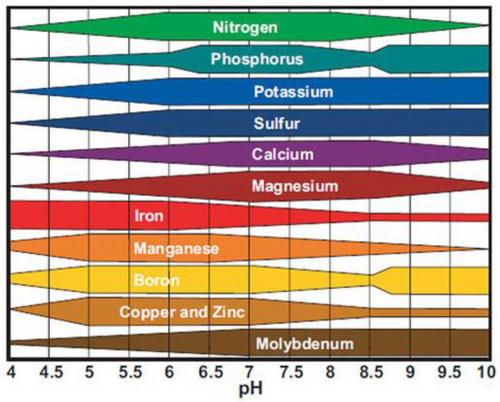
This ultimately means that if your soil pH is too far from the desired range, you waste your money putting fertilizer down. Your grass can’t access the nitrogen, phosphorus, and potassium in the soil.
The soil pH tends to become too acidic in our area and fall below that range. Calcitic lime is typically applied to bring it up and improve nutrient availability. You can choose from agricultural ground limestone, pelletized, or pulverized limestone.
For more information on adding lime, head over to our article on winterizing your lawn.
3. Minimize Traffic When the Ground is Wet
Early in the winter, before the ground freezes and as it’s thawing in the spring, you want to stay off it as much as possible. When the soil is full of water and soggy, you run the risk of compacting it if you’re continuously walking across the lawn. You don’t want to waste the money you spent on your fall lawn aeration!
You should also avoid raking leaves (or the grass) when the ground is too wet to keep from pulling the grass out by its roots.
4. Take Care of Fallen Leaves
We have an entire post on whether or not to leave fallen leaves on the ground through the winter, so we’re just going to touch briefly on the topic here.
Leaving them has excellent benefits, including adding organic matter and minerals to the soil after earthworms, microorganisms, and fungi go to town, breaking them down. The plants use the minerals, and the organic matter helps improve the soil structure and water-holding capacity.
However, you don’t want to leave a thick layer of leaf matter on your lawn through the winter.
A heavy layer of leaves blocks sunlight and stops air circulation, inhibiting photosynthesis and smothering the grass. This lack of air movement also creates a perfect environment for overwintering lawn diseases, including snow mold and brown patch. Plus, the weight of wet leaves can damage the crowns and compress the grass blades.
If you’re set on leaving the leaves on your lawn, shred them into fine pieces or chop them up with your mulching mower late in the fall. The smaller pieces allow for airflow and sunlight to still reach the blades.
Remember, too, that 855-RILAWNS offers fall cleanup services that remove all the leaves, branches, sticks, and other debris in your yard. If you don’t want to tackle the project yourself, call us—we’ll come in and take care of it!
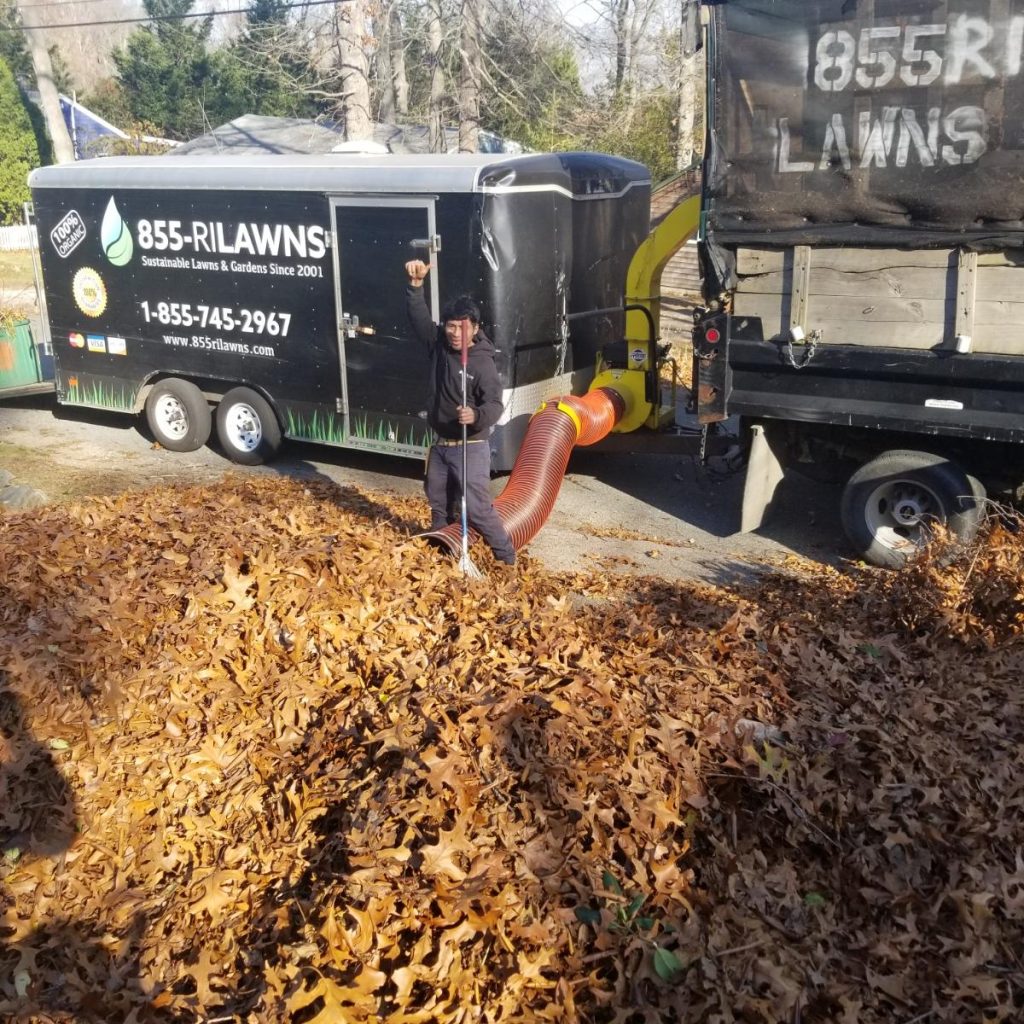
5. Be Mindful of Ice Melt Products
When living in a northern climate, snow and ice are a big part of winter, and clearing driveways and sidewalks is a never-ending job. This means you’re likely using deicing products or “salt” to melt the ice off. This is understandable, but you must be careful about what you use and how much you apply.
As the snow and ice melt—especially towards the end of winter when spring is nearing—the water running off the concrete or asphalt may be filled with chemical salts from your ice melts. These salts get into the nearby lawn and can wreak havoc on your grass.
First and foremost, the salts draw moisture from the blades, drying the grass out. These ice melt products are usually filled with sodium, calcium, or chloride, which can be problematic when they build up in the soil.
Yes, calcium is needed by plants, but deicers contain much more than what your grass needs. When the plant takes up these large amounts, too much calcium can stunt growth. Sodium toxicities hinder growth, too, and can stop cellular development completely. Too much chloride will brown the grass tips and margins.
Sometimes, it’s nearly impossible to avoid using the products altogether, but there are ways to help minimize or prevent damage to your grass. An excellent way to do this is to mix the ice melt with sand, cutting down on the chemical salts used. Then, when spring rolls around, use plenty of water to leach the sodium, calcium, and chloride deep down into the soil and out of the root zone.
6. Stake Lawn Off for Snow Removal
Another of our helpful winter lawn care tips is related to snow removal. More specifically, protecting your lawn if you have someone plowing for you.
One of the critical things you can do to protect your lawn is to stake off boundaries at the edge of the street, driveway, sidewalk, etc. When everything is blanketed in a continuous sheet of white snow, it’s nearly impossible for the plow operator to tell where the hard surface they’re plowing stops and your grass starts!
Staking your grass boundaries with highly visible snow stake markers keeps the weight of the plow truck off your lawn (and let’s face it, that plow is heavy!) and keeps the blade from digging into your grass or gouging the ground.
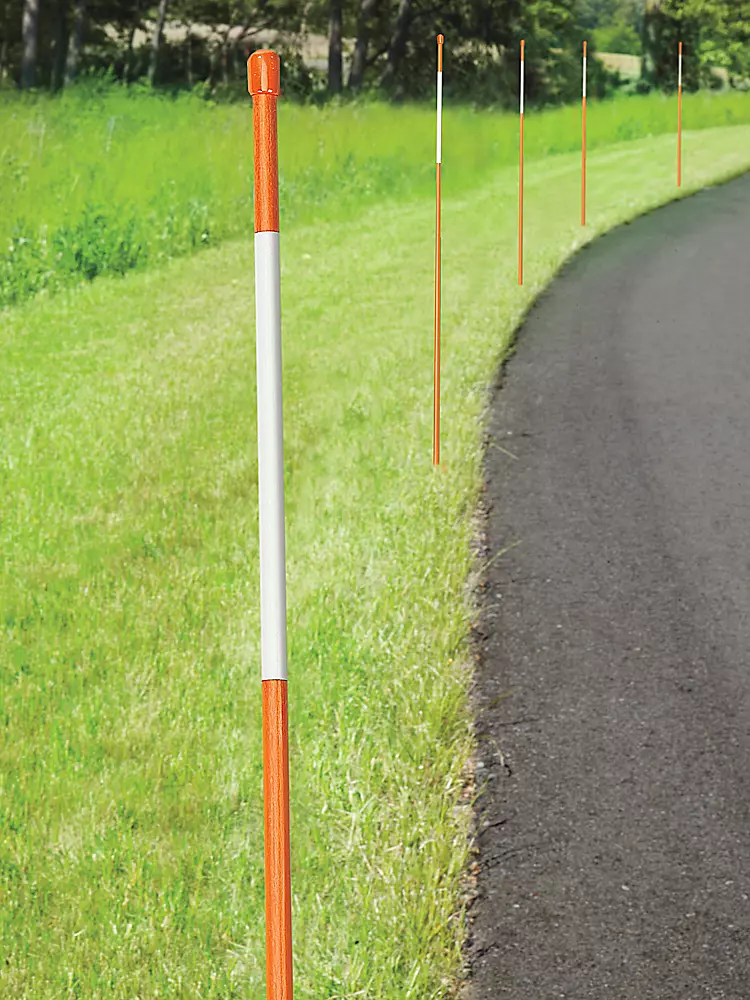
- Ensure your markers are at least four feet tall so they remain exposed throughout the winter. Eight-foot tall stakes may be overkill; five to six feet is usually sufficient.
- Make sure your markers are highly visible. You want them to stand out and catch the plow operator’s eye as soon as they approach them. Many markers are brightly colored and have reflective material at the top.
7. Prevent Snow Mold
Lastly, a critical job through the winter is preventing snow mold. Snow mold is a fungal lawn disease that forms when wet leaves or heavy snow cover remains on the lawn for too long, creating a stagnant, damp environment. It can be gray or pink and appears as fluffy, circular spots in the grass that look cottony.
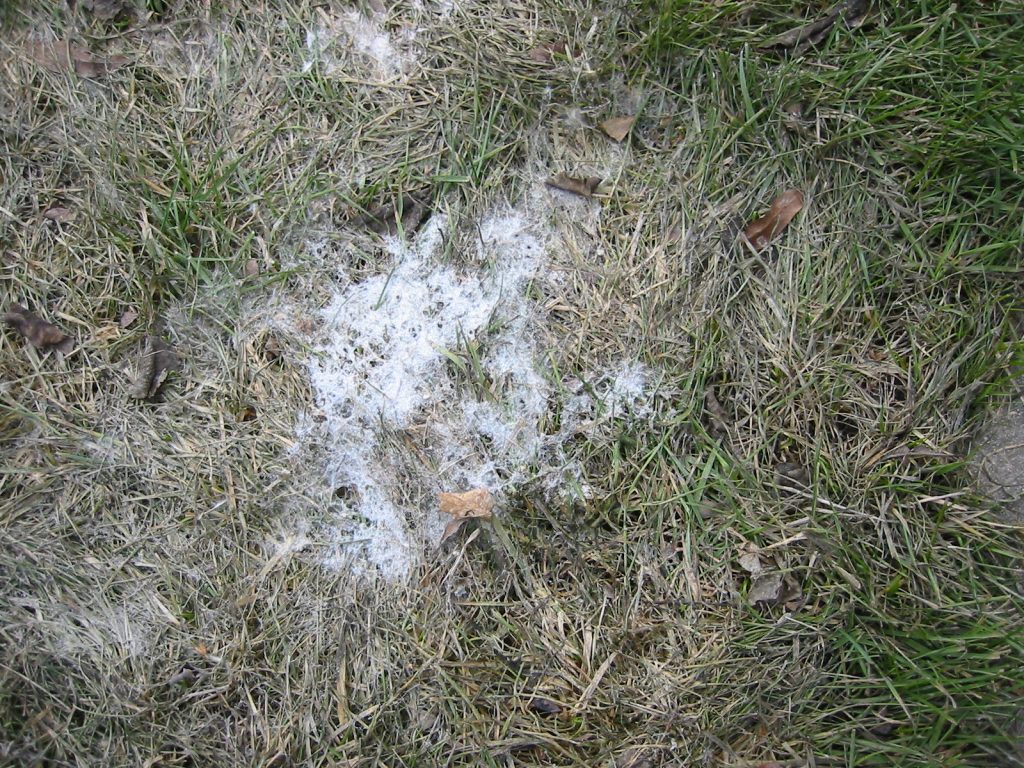
The fungus is active through the winter, but the damage appears in the spring when the snow melts and the grass is exposed.
To prevent snow mold:
- Dethatch your lawn in the fall to improve soil drainage and air circulation through the turf.
- Mow your grass short before the first snowfall. When the grass is tall enough to lay flat under the snow, it creates a thick mat of nooks and crannies that are prime habitats for snow mold to move in and take hold.
- Avoid creating large snow piles when you clear snow from sidewalks and driveways. When this snow melts on warmer days, it makes the perfect conditions for snow mold growth.
855-RILAWNS is Here to Help with Winter Lawn Care Tips
Whether you need help with fall fertilizing, leaf cleanup, or getting your yard ready for winter, we’re here to help! Contact us here for a quote, or connect with us through our Facebook page. Our lawn care professionals provide top-quality services and take pride in keeping your yard looking its best!
The service area of our skilled RI Landscapers includes South Kingstown, Narragansett, Charlestown, Exeter, North Kingstown, Warwick, West Warwick, Jamestown, Richmond, Providence, East Providence, South Kingstown, and East Greenwich.



